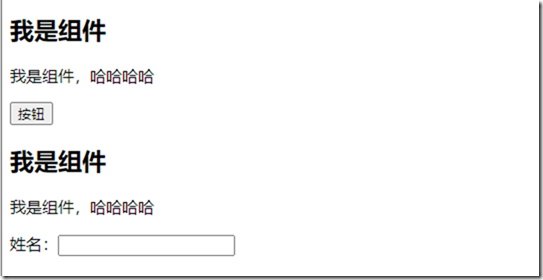插槽
1、为什么要使用插槽#
组件的插槽
组件的插槽是为了让我们封装的组件更加具有扩展性
让使用者可以决定组件内部的一些内容到底是什么
2、如何封装这类组件呢? slot#
最好的方式就是将共性抽取到组件中,将不同暴露为插槽
一旦我们预留了插槽,就可以让使用者根据自己的需求,决定插槽中插入什么内容
是搜索框,还是文字,还是菜单,由调用者自己来决定
3、插槽的基本使用#
<!--1、插槽的基本使用 <slot></slot>
2、插槽的默认值 <slot><button>按钮</button></slot>
3、插槽中可以放多个元素
-->
<template id="cpn">
<div>
<h2>我是组件</h2>
<p>我是组件,哈哈哈哈</p>
<slot></slot>
</div>
</template>
<div id="app">
<cpn><button>按钮</button></cpn>
<cpn>姓名:<input type="text"></cpn>
</div>4、具名插槽的使用#
当一个组件中有多个插槽时,可以使用具名插槽,利用插槽名来替换具体的插槽
<div id="app">
<cpn>
<span slot="mid">替换的呀</span>
</cpn>
</div>
<template id="cpn">
<div>
<h2>我是组件</h2>
<slot name="left"><span>我是左边的</span></slot>
<slot name="mid"><span>我是中间的</span></slot>
<slot name="right"><span>我是右边的</span></slot>
</div>
</template>
#
5、作用域插槽#
作用域插槽是slot一个比较难理解的点,而且官方文档说的又有点不清晰。
这里,我们用一句话对其做一个总结,然后我们在后续的案例中来体会:
父组件替换插槽的标签,但是内容由子组件来提供
<div id="app">
<cpn>
<!--目的是获取子组件中的pLanguage-->
<template slot-scope="slot"> <!--slot-scope="slot" 引用这个插槽对象-->
<span v-for="item in slot.data">{{item}} —— </span>
</template>
</cpn>
</div>
<template id="cpn">
<div>
<slot :data="pLanguages">
<ul>
<li v-for="item in pLanguages">{{item}}</li>
</ul>
</slot>
</div>
</template>
<script src="../js/vue.js"></script>
<script>
const app = new Vue({
el: "#app", //用于挂载要管理的元素
data: { //定义数据
message: 'hello',
},
components: {
cpn: {
template: "#cpn",
data(){
return {
pLanguages: ['javaScript','c++','java',"c#","python","go"]
}
}
}
}
})
</script>







【推荐】国内首个AI IDE,深度理解中文开发场景,立即下载体验Trae
【推荐】编程新体验,更懂你的AI,立即体验豆包MarsCode编程助手
【推荐】抖音旗下AI助手豆包,你的智能百科全书,全免费不限次数
【推荐】轻量又高性能的 SSH 工具 IShell:AI 加持,快人一步
· 从 HTTP 原因短语缺失研究 HTTP/2 和 HTTP/3 的设计差异
· AI与.NET技术实操系列:向量存储与相似性搜索在 .NET 中的实现
· 基于Microsoft.Extensions.AI核心库实现RAG应用
· Linux系列:如何用heaptrack跟踪.NET程序的非托管内存泄露
· 开发者必知的日志记录最佳实践
· TypeScript + Deepseek 打造卜卦网站:技术与玄学的结合
· Manus的开源复刻OpenManus初探
· AI 智能体引爆开源社区「GitHub 热点速览」
· 三行代码完成国际化适配,妙~啊~
· .NET Core 中如何实现缓存的预热?